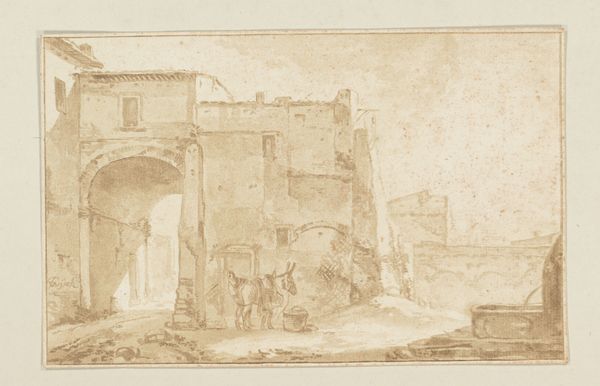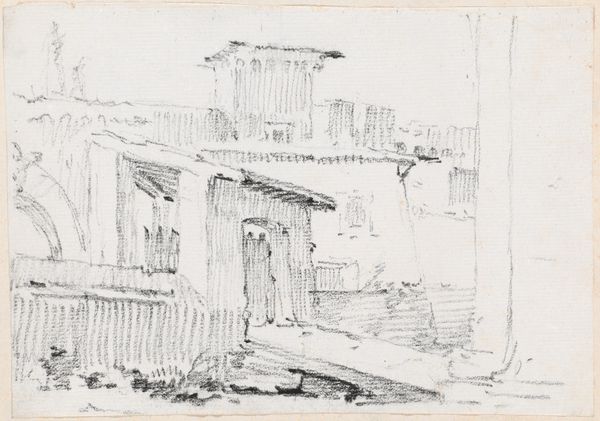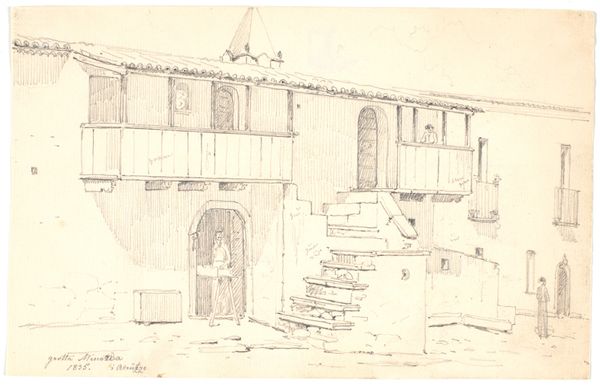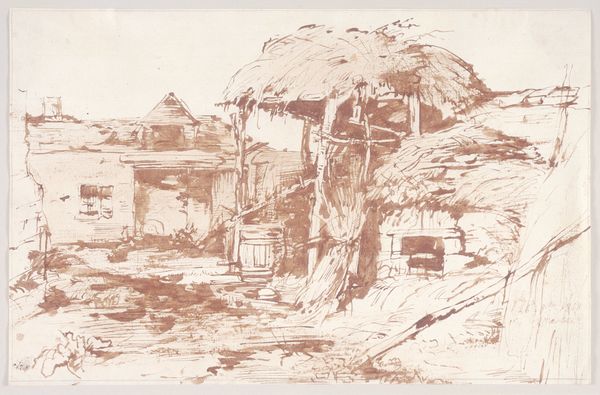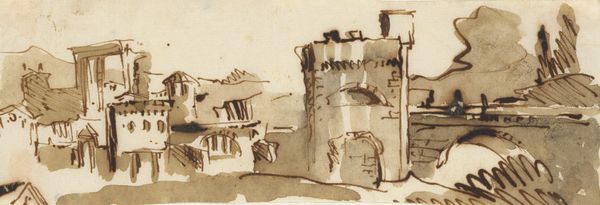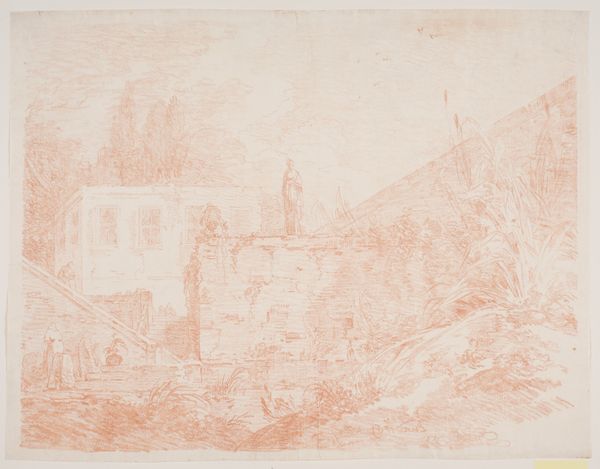
drawing, ink, architecture
#
drawing
#
baroque
#
etching
#
ink
#
architecture drawing
#
cityscape
#
architecture
Dimensions: 196 mm (height) x 303 mm (width) (bladmaal)
This sepia drawing, "Row of Houses with Limekiln in Rome," was created by Jan Both in the 17th century. Look at the kiln, its form an echo of ancient Roman arches. The arch, historically a symbol of triumph and transition, speaks here of transformation – the turning of raw stone into lime, a crucial element of building and creation. The kiln itself resembles a portal, a recurring motif found in many ancient cultures, representing both entry and exit, life and death. Think of the city gate as a symbol found on ancient Egyptian sarcophagi, or the gates of Ishtar. Even the humblest architectural element carries a symbolic weight. This transformation, both physical and symbolic, engages us on a subconscious level. Notice how the symbol is not linear, but cyclical, constantly evolving. The arch, a feature of power and dominance in Roman Triumphs, reappears, altered and humbled, to serve a more utilitarian function in Both's Rome. The image calls to our cultural memory.
Comments
No comments
Be the first to comment and join the conversation on the ultimate creative platform.

